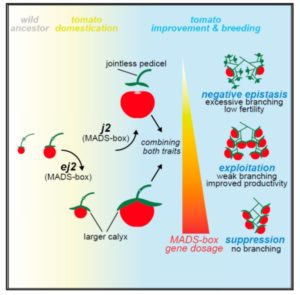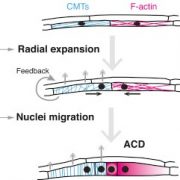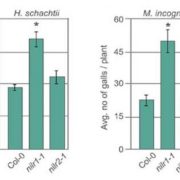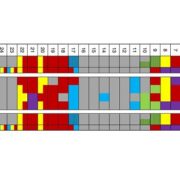Bypassing negative epistasis on yield in tomato imposed by a domestication gene
 Tomatoes normally grow as multiple flowers along a single branch. Soyk et al. explored a large collection of wild and domesticated accessions to identify those with branched inflorescences, which should be able to produce more fruit per plant. They identified a few related branchy mutants which they called s2, which is highly branching but with low fertility so fails to form many fruit. They subsequently recognized that the s2 phenotype arises from variation in two unlinked genes, J2 and EJ2, both of which encode MADS box transcription factors. The ej2w allele increases fruit size, and was probably selected for during domestication. The j2TE allele provides a desirable jointless phenotype that prevents fruit from dropping, but when combined with ej2w leads to excessive branching and decreased fruit yield. By separating out these two loci and engineering new alleles, tomatoes with more but not too much more branching and higher yelds were produced. Cell 10.1016/j.cell.2017.04.032
Tomatoes normally grow as multiple flowers along a single branch. Soyk et al. explored a large collection of wild and domesticated accessions to identify those with branched inflorescences, which should be able to produce more fruit per plant. They identified a few related branchy mutants which they called s2, which is highly branching but with low fertility so fails to form many fruit. They subsequently recognized that the s2 phenotype arises from variation in two unlinked genes, J2 and EJ2, both of which encode MADS box transcription factors. The ej2w allele increases fruit size, and was probably selected for during domestication. The j2TE allele provides a desirable jointless phenotype that prevents fruit from dropping, but when combined with ej2w leads to excessive branching and decreased fruit yield. By separating out these two loci and engineering new alleles, tomatoes with more but not too much more branching and higher yelds were produced. Cell 10.1016/j.cell.2017.04.032










Leave a Reply
Want to join the discussion?Feel free to contribute!